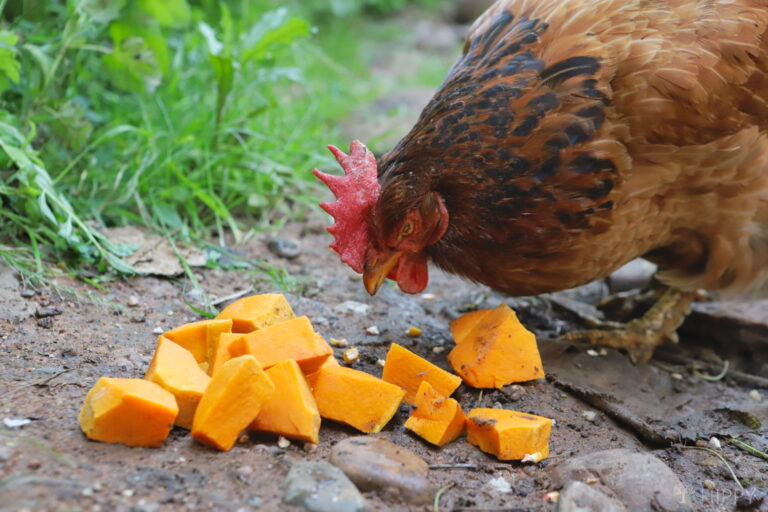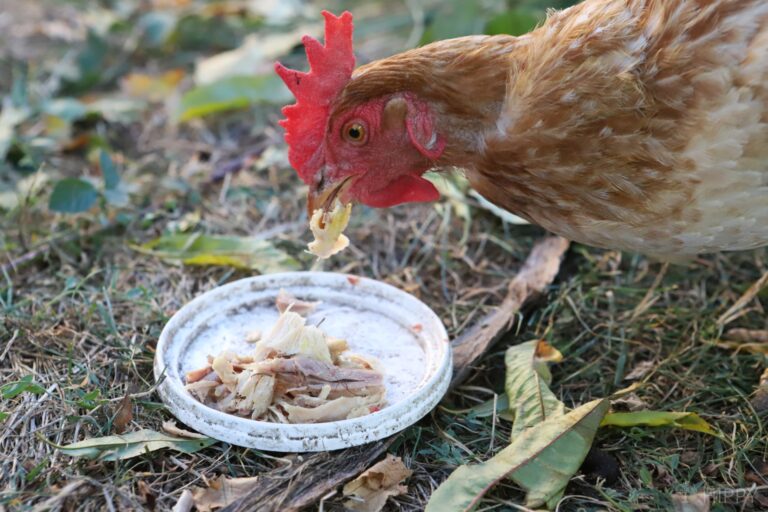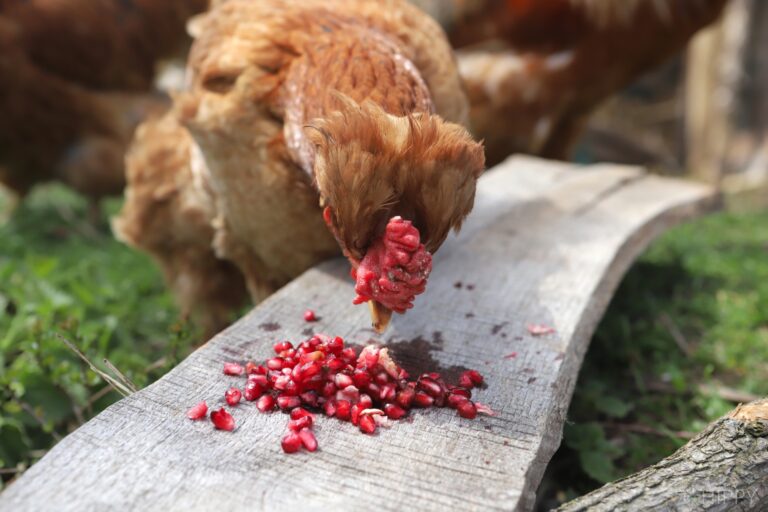Chickens might be taken for granted most of the time, but if you have a flock of your own you probably already know and appreciate how special and beautiful these birds really are. With plumage that can be every color of the rainbow, striking postures, and even different combs that lend each breed a unique look.

And speaking of combs, you might be surprised to learn that there are many different types distributed across the more than 400 different chicken breeds on Earth.
If you consider yourself a true chicken lover you’ve got to know the names of these combs, what they look like, and how they pertain to the overall health of the birds they belong to. Keep reading, and I’ll tell you about the nine different types of combs that chickens have…
Are Combs Just Decoration on Chickens?
Before we dig into our list, it’s worth examining whether or not combs are just decoration for chickens, as some people assert.
Yes, it is true that they serve an important purpose when it comes to mating, because most hens want a rooster that has a big, bold, impressive… comb… but they do a lot more than that.
Combs help establish a chicken’s place in the pecking order, with birds that have bigger and better combs tending to be closer to the top.
The comb is also vitally important when it comes to thermal regulation of the chicken’s body temperature: Combs are highly vascular, and a larger comb with more surface area can allow a chicken to stay cooler in hotter weather.
On the other hand, larger combs are far more vulnerable to frostbite and so smaller combs are a good adaptation for cold-weather breeds.
And every seasoned chicken owner should know that the comb can actually be an important “early warning” indicator concerning the health of the bird that it belongs to:
If the comb seems discolored, pale, shriveled, shrunken, or in any way different from its usual color or texture, you can bet your bottom dollar that something is wrong with that chicken and you need to investigate.
Keep all of these facts in mind as you read over the different kinds of combs below.
Single Comb
This is the quintessential and stereotypical chicken comb you’ve probably seen a hundred times before, even if all you’ve ever seen are stock photos or artwork of chickens.
The single comb is like a tall fin on a chicken’s head, one that is lined with spikes or protrusions along the top. Generally, the ones near the middle are taller than the ones near either end.

Many different breeds have single combs, including such respected and popular breeds as the Jersey Giant, Orpington, and Rhode Island Red but there are many, many more.
They are especially prominent on roosters, as with all combs, but can still be quite sizable on a hen. This comb is great for hot weather, but particularly vulnerable to frostbite.
Carnation
You can think of the carnation comb, which is incredibly rare, as a sort of variation of a single comb. All things equal, it tends to be a little bit taller and thicker compared to a single comb, but has a similar row of spikes on top, again being taller in the middle and shorter on either end.
Where the carnation comb differs is at the back, as it has two to four smaller protrusions that point out straight to the rear, and the first two are often conjoined, looking a little bit like a fish’s tail.
This is among the rarest types of comb in the world, with only two Spanish heritage breeds officially possessing it, the Penedesenca, and Emporadanesa.
Cushion
The cushion comb really lives up to its name, and is little more than a small, lightly textured pad on top of a chicken’s head just behind the base of the beak. One of the distinguishing characteristics of the cushion comb is that it does not extend back over the eyes and to the back of the chicken’s head.
Although all chicken combs have a noticeable crinkled or wrinkly texture, some looking almost like a prune or a human brain, the cushion comb is very smooth with only very small bumps or protrusions on its surface. I think it feels and looks a little bit like cracked leather.
As you might expect due to its tiny size this is one of the best combs for chickens that will be expected to endure cold weather, but it won’t help them shed heat if they are in hot weather. Very few chicken breeds have a cushion comb, with the Chantecler being the most well-known.
Strawberry
No surprise how the strawberry comb got its name! It looks like a strawberry, minus the green crown, simply got sat on a chicken’s beak.
This comb is especially notable for its smallish overall size, extremely wrinkly texture, and far-forward protrusion, basically resting almost entirely on the beak of the bird that possesses it.
A relatively rare type, Malays are the most famous, or you might say infamous, breed that has them. These imposing, ferocious birds benefit from the strawberry comb because it is a much smaller target and less prone to bleed heavily in a fight when struck- something Malays do often!
But more prosaically, the strawberry comb is an asset in cold weather because it is unlikely to suffer significant frostbite, though it does not do much to help a chicken in very hot, humid weather.

Rose
Low profile, tapering, and textured are all terms that describe the rose comb. You might think of it as a slightly shrunken and extended strawberry comb, or a single comb that didn’t quite fully form. It is so named because it tends to resemble the tightly nested petals of a rose that is not yet in full bloom.
This comb begins at the brow or base of the beak and extends about halfway back over a chicken’s head, narrowing the entire time as it goes. The thicker part or pad is just ahead of the chicken’s eyes where the beak meets the skull.
Look at it up close and you’ll see that it has a convoluted, wrinkly texture but it is also lined with tiny individual spikes along the top ridge, sort of like a single comb in miniature.
Pea Comb
The tiniest comb there is, the pea comb is distinguished by how little it is. Barely qualifying as a bud of flesh between a chicken’s eyes, if you get close enough and can get a chicken to hold still long enough you’ll see that it is actually three conjoined but tiny protuberances of flesh.
Chickens with pea combs often have spectacular plumage or interesting growths of feathers to offset the lack of appeal when it comes to attracting a mate, and speaking of utility a pea comb really won’t help much to cool a chicken down when the mercury rises. The benefit, of course, is that there is almost nothing there to freeze in cold weather.
Surprisingly, quite a few chickens have pea combs including some of the most known and most loved domestic breeds like Araucanas, Ameraucanas, and Brahmas.
Walnut Comb
If you’re starting to think that most chicken combs were named based on the first thing that came to the neighbor’s mind, you are absolutely right.
If you need proof look no further than the walnut comb which looks for all the world like the edible part of a walnut and has simply been plopped right over a chicken’s face.
This wide, round, wrinkled, and cratered comb can grow so wide that it will actually interfere with a chicken’s vision to the front. Nonetheless, they are fairly impressive, and combined with large wattles, they can give these already distinguished chickens a truly special look.
For instance, consider that some of the most striking birds in the world have walnut combs, including the beloved Silkie and also the Orloff and Yokohama.
V Comb
One of the most interesting and intimidating combs around, and my personal favorite, is the V comb, sometimes spelled “vee” or alternately called a devil- or horn comb.
Once again, the truth is in the name and a V comb consists of two long spurs that project upward or forward off of a chicken’s head, often splayed at an angle to each other. An appearance that, you guessed it, looks exactly like a pair of horns!
The rest of the comb is a tight generally smooth pad of flesh that typically stops before the midpoint on the skull and saddles the very base of the beak, but doesn’t extend forward and over it.
This is another rare type, and unsurprisingly, it is possessed by rare and distinguished birds like the Sultan, Crevecoeur and Polish.
Buttercup
I saved the best and most spectacular comb for last. It also happens to be beyond rare; it is genuinely unique! For comb connoisseurs it doesn’t get any better than this!
The buttercup comb is possessed only by a single breed, the Sicilian Buttercup from which it derives its name. It’s hard to describe, but if I had to I would, say it looks a lot like a moose’s antlers, only joined together at the center of the head.
Much of the pad is smooth and palmate, with radiating tines of flesh going all the way around from the front nearly to the back, where they rejoin into a somewhat jumbled mass that swoops upward.
This comb is absolutely distinctive and there is nothing else like it among standard comb types. It is uniformly excellent in hot weather because of its tremendous surface area, but like the single comb and other large, showy types it is very vulnerable to frostbite.
If you want to see one of these in person, again, the only way is to get yourself a Buttercup chicken or two!

Tim is a farm boy with vast experience on homesteads, and with survival and prepping. He lives a self-reliant lifestyle along with his aging mother in a quiet and very conservative little town in Ohio. He teaches folks about security, prepping and self-sufficiency not just through his witty writing, but also in person.
Find out more about Tim and the rest of the crew here.
